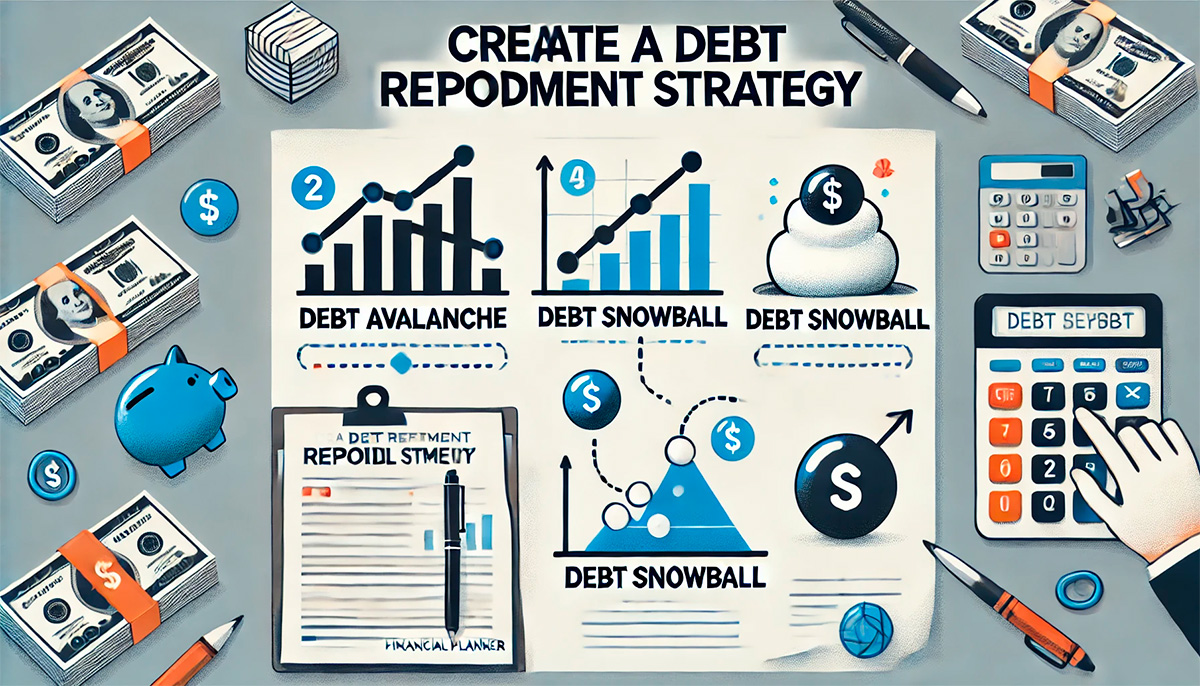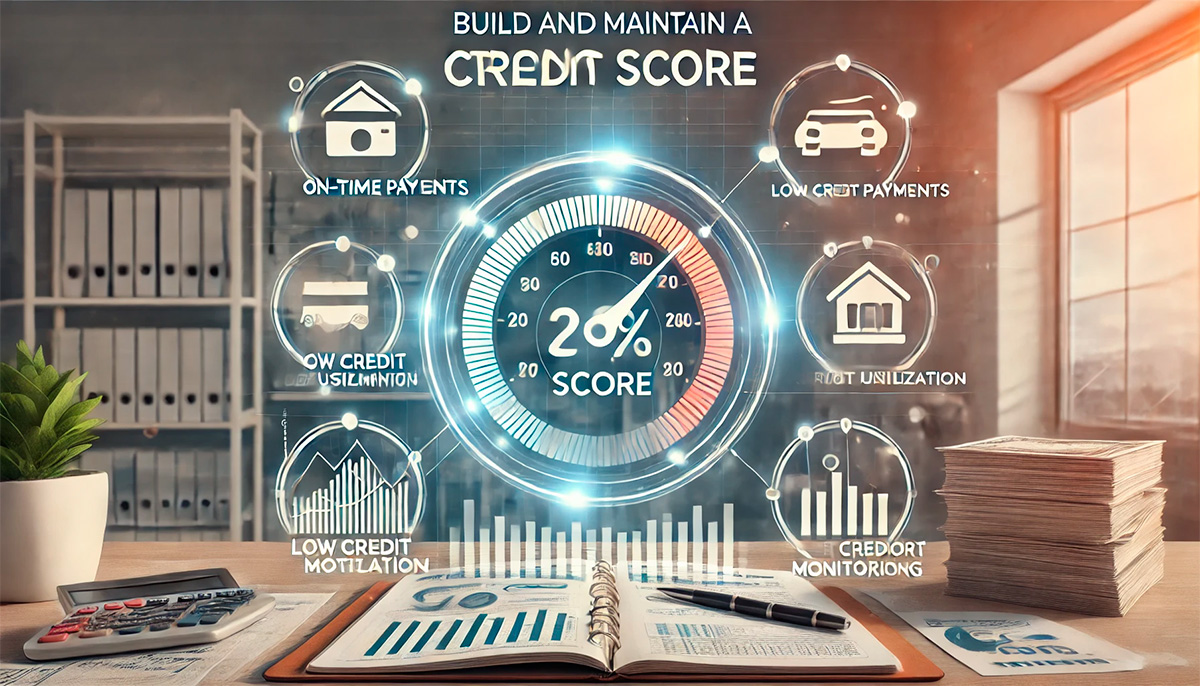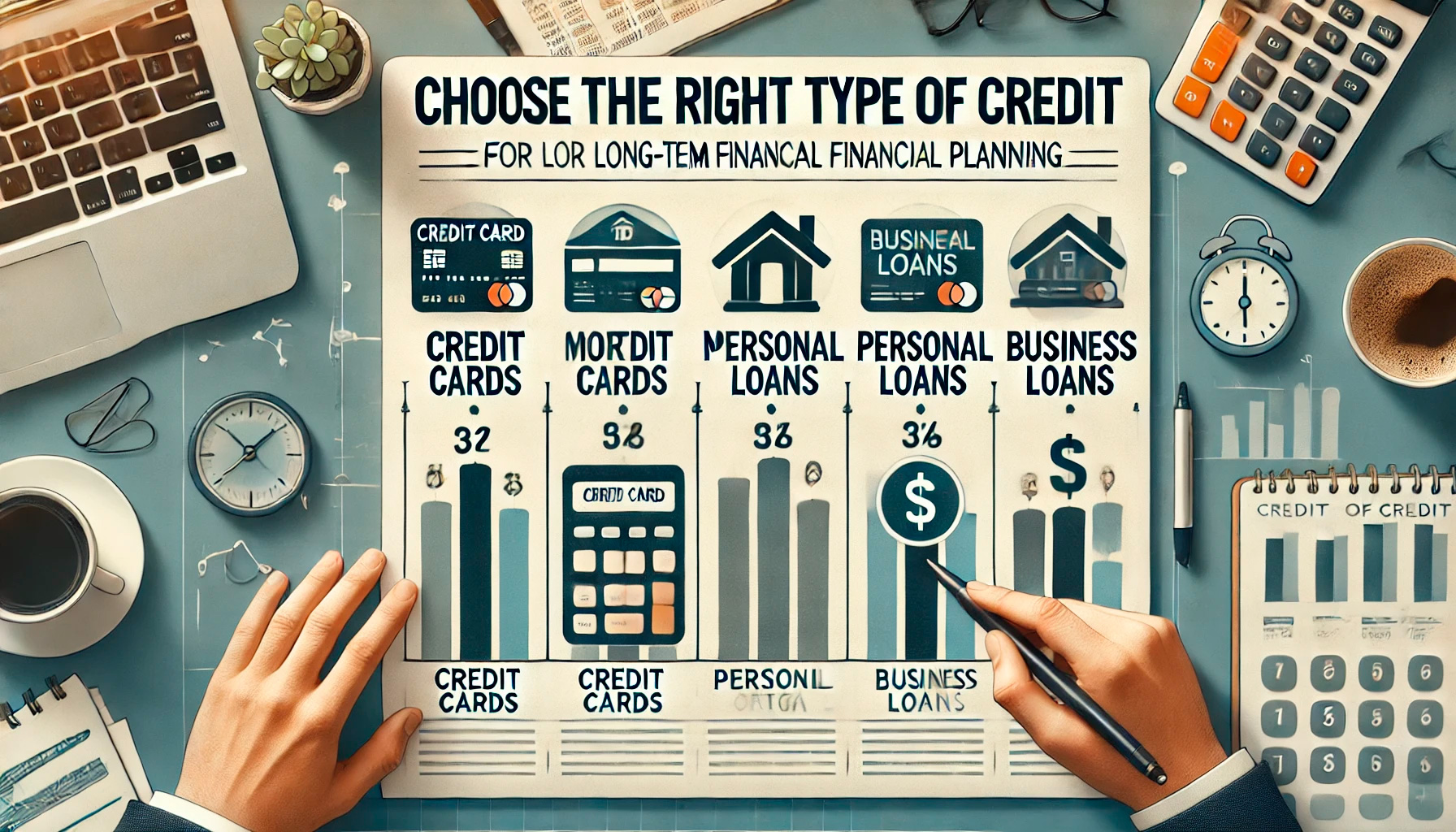Credit, when used wisely, can be a powerful tool in building a long-term financial plan. Whether it’s to finance major purchases, manage cash flow, or grow wealth, credit can offer the flexibility needed to achieve significant financial goals. However, leveraging credit requires careful planning and strategy to avoid falling into debt traps. In this guide, we will explore how to incorporate credit into a solid, long-term financial plan and the steps you should take to ensure it works in your favor.
1. Define Your Financial Goals
The first step in using credit for long-term financial planning is identifying your key financial goals. These might include buying a home, funding your children’s education, investing in a business, or planning for retirement. By defining clear goals, you can create a credit strategy that supports these objectives without overstretching your finances.
Common Financial Goals:
- Building credit to secure a mortgage
- Using credit for investment opportunities
- Managing cash flow for business expansion
- Consolidating high-interest debt to free up cash for savings
Tip: Set specific, measurable, and time-bound goals to guide your credit decisions. For example, “I want to improve my credit score by 50 points in the next 12 months to qualify for a lower mortgage rate.”
2. Choose the Right Type of Credit
Not all credit is created equal, and different types of credit serve different purposes. It’s important to choose the right type of credit for your financial goals and to understand the terms and conditions associated with each.
| Type of Credit | Best Use | Considerations |
|---|---|---|
| Credit Cards | Short-term purchases, building credit, and earning rewards | High interest rates if balances aren’t paid in full each month |
| Mortgages | Home purchases and real estate investments | Long-term commitment, requires a strong credit score for favorable rates |
| Personal Loans | Consolidating high-interest debt or financing major expenses | Fixed payments, may require good credit for lower rates |
| Business Loans | Funding a new business, expansion, or working capital | Requires a solid business plan and creditworthiness |
Tip: Match the type of credit to your specific financial goal. For instance, use a mortgage for long-term home ownership, but avoid using credit cards for high-value purchases that can’t be paid off quickly.

3. Build and Maintain a Strong Credit Score
A strong credit score is essential for obtaining favorable loan terms and interest rates, which can significantly impact your long-term financial plan. By building and maintaining good credit, you can ensure access to low-cost borrowing when needed.
Steps to Build and Maintain Your Credit Score:
- Make payments on time: Your payment history is the most significant factor in your credit score.
- Keep credit utilization low: Aim to use less than 30% of your available credit.
- Monitor your credit report regularly: Check for errors or signs of identity theft and dispute inaccuracies.
- Avoid opening too many new accounts: Multiple hard inquiries in a short period can lower your score.
Tip: Consider setting up automatic payments for credit accounts to ensure you never miss a due date, which helps protect your credit score.
4. Create a Debt Repayment Strategy
Using credit responsibly means having a plan to repay what you borrow. Without a strategy, debt can quickly spiral out of control, making it harder to achieve your financial goals. An effective debt repayment strategy ensures that credit works for you, not against you.
Two Common Debt Repayment Methods:
- Debt Avalanche: Focus on paying off debts with the highest interest rates first while making minimum payments on other accounts. This method reduces the total interest paid over time.
- Debt Snowball: Pay off the smallest debts first to build momentum, while continuing to make minimum payments on larger debts. This method can provide psychological wins that encourage continued progress.
Tip: Choose the method that works best for your financial situation and personality. If high-interest debt is a concern, the avalanche method might save you more in the long run. If you need small victories to stay motivated, the snowball method could be more effective.

5. Leverage Credit to Build Assets
One of the most strategic ways to use credit in a long-term financial plan is to leverage it to build assets that appreciate in value or generate income. For example, using a mortgage to buy a home that increases in value over time, or using a business loan to invest in a company that generates revenue.
Examples of Asset-Building Credit Strategies:
- Real Estate: A mortgage allows you to purchase property that can appreciate or generate rental income.
- Business Investment: A business loan can fund expansion, product development, or new ventures that grow revenue.
- Education Loans: Borrowing for education can increase your earning potential, leading to long-term financial benefits.
Tip: Only borrow to invest in assets that are likely to increase in value or improve your financial situation. Avoid borrowing for depreciating assets or unnecessary expenses.
6. Plan for Future Borrowing Needs
Incorporating credit into your long-term financial plan means thinking ahead about future borrowing needs. Planning allows you to take advantage of favorable credit conditions, like low interest rates, when they arise. This might include refinancing a mortgage when interest rates drop or taking out a loan for business expansion at a strategic time.
Tip: Keep an eye on market trends and be prepared to act when credit conditions are favorable. Use your improved credit score to secure better loan terms when the opportunity arises.
7. Use Credit Wisely in Emergency Situations
Credit can be a lifeline during unexpected financial challenges, such as medical emergencies, job loss, or urgent repairs. However, it’s important to use credit carefully in these situations to avoid high-interest debt that can spiral out of control.
Steps to Manage Emergency Credit Use:
- Have an Emergency Fund: Build an emergency savings account to reduce reliance on credit during tough times.
- Use Low-Interest Options: If credit is necessary, opt for low-interest loans or lines of credit instead of high-interest credit cards.
- Repay Quickly: Focus on repaying emergency debt as soon as possible to avoid long-term interest accumulation.
Tip: While it’s tempting to use credit in an emergency, always prioritize creating an emergency fund to reduce the need for borrowing.
Conclusion: Integrating Credit into Your Long-Term Financial Plan
When used responsibly, credit can be a valuable component of your long-term financial strategy. By setting clear financial goals, choosing the right types of credit, building and maintaining a strong credit score, and developing a repayment strategy, you can leverage credit to create wealth, manage cash flow, and achieve your financial aspirations.
Remember, the key to success with credit is planning. Make sure every borrowing decision is aligned with your broader financial plan, and regularly review your strategy to ensure it remains on track for the long term.

